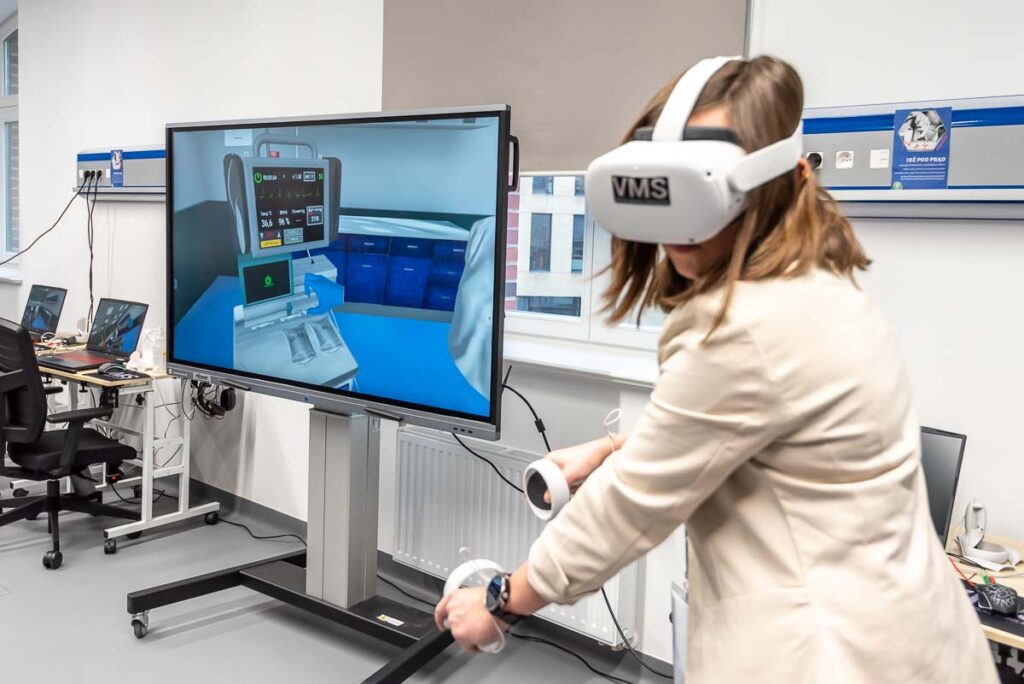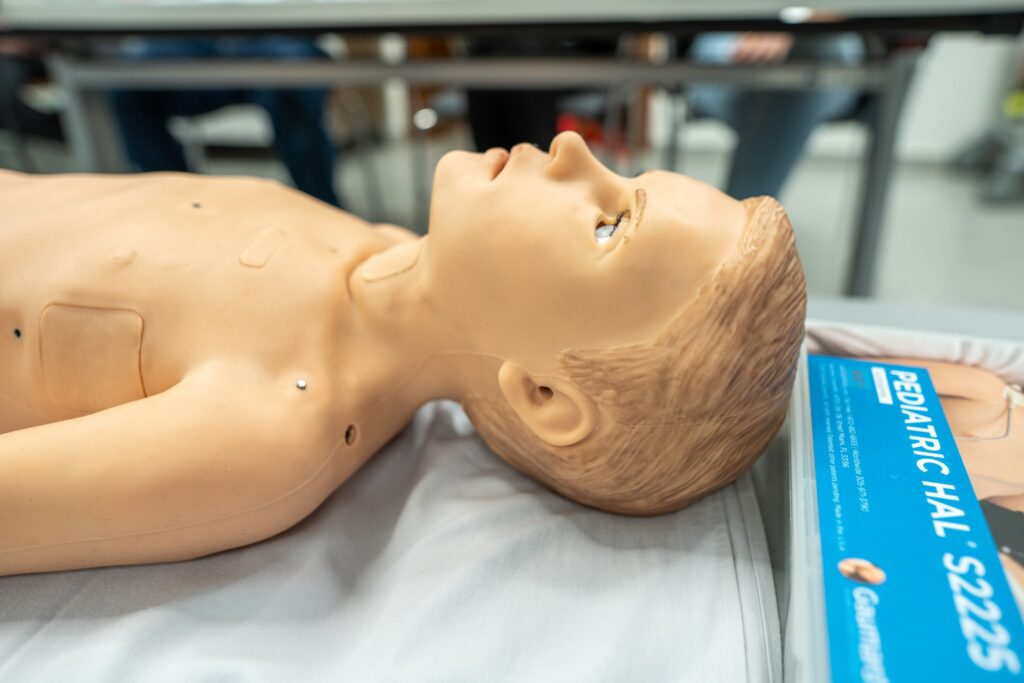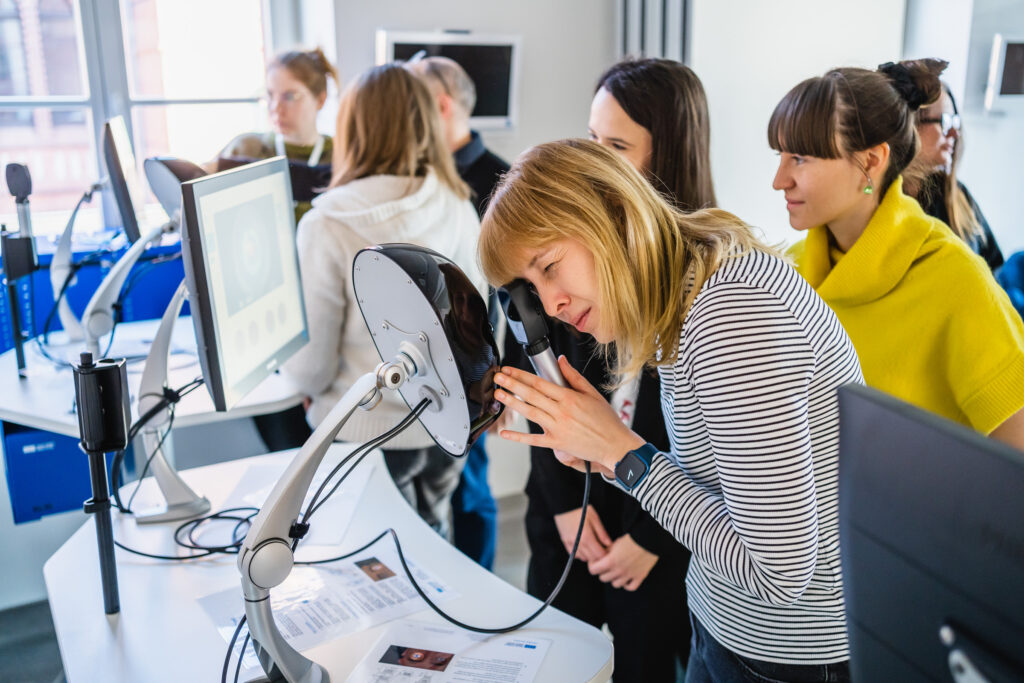The VR Simulation Centre at Wroclaw Medical University – Poland’s top university in international rankings – has been highlighted in Nature magazine. The prestigious journal used a photo of the medical simulation system as the main illustration for an article about how universities around the world are evolving to meet the challenges of today’s world.
The caption for the photo says: “A person uses a virtual reality headset at Wroclaw Medical University in Poland to practice diagnosing and treating virtual patients” — this was the opening image of the article “Reinventing universities for today’s world” in the September issue of Nature (Nature/Vol 645/25 September 2025). Article discusses the necessity for universities to develop in response to the needs of the modern world. It highlights how higher education must adapt to new realities in light of global crises, from climate change to financial pressures and new technological advancements. The article features six scientists who describe initiatives designed to make universities more open, modern, and deeply connected to society.

One of the topics discussed is artificial intelligence, which can accelerate the training of doctors. Professor Ya-Qin Zhang from Tsinghua University describes the simulated environment his team developed, in which virtual patients and AI doctors recreate realistic clinical situations—from symptom presentation to diagnosis and treatment.
A similar system has been in use at Wroclaw Medical University for the past three years. The photo, selected by Nature as the lead illustration for the article, was taken in January 2023 by Krzysztof Zatycki, one of the journalists invited to visit the newly established VR Simulation Centre at UMW’s Medical Simulation Centre.
– The world around us is changing rapidly, and as a university, we provide our students with opportunities for education fit for the 21st century – said Professor Piotr Ponikowski, Rector of UMW, during the event. – We cannot teach the way we were taught decades ago. Modern educational tools increasingly utilize new technologies, and we are introducing solutions that are most useful for the future work of medical professionals.
Journalists were shown stations for medical computer simulation, using two new systems. These allow students to practice procedures related to first aid and managing patients during mass events, as well as on a virtual patient platform, where rescue procedures can be practiced in pre-hospital and hospital settings. These systems enable the simulation of the entire diagnostic and therapeutic process in medical computer simulation and virtual reality environments. By wearing VR glasses and sitting at a computer screen, students are transported into an ambulance or hospital, depending on the subject matter of the session. The conference emphasized the benefits of modern education while noting that medical simulation cannot replace contact with real patients, although it can significantly accelerate the learning process and minimize the risk of errors.

UMW’s Medical Simulation Centre continues to evolve. It is a model of modern medical education, where theory is combined with practice in a fully safe and controlled environment. Students have access to a wide range of simulation workshops and hospital-like rooms equipped with real medical equipment. They can also use advanced simulators, such as those for obstetrics, pediatrics, and neonatology.
UMW’s Medical Simulation Centre continues to evolve. It is a model of modern medical education, where theory is combined with practice in a fully safe and controlled environment. Students have access to a wide range of simulation workshops and hospital-like rooms equipped with real medical equipment. They can also use advanced simulators, such as those for obstetrics, pediatrics, and neonatology.

As the world races ahead and technology evolves rapidly, UMW keeps up with global trends—and often leads them. A symbolic proof of this is the use by Nature magazine of a photo from the university taken nearly three years ago. The system introduced at that time remains a hallmark of modern education.
Photo: T. Walów